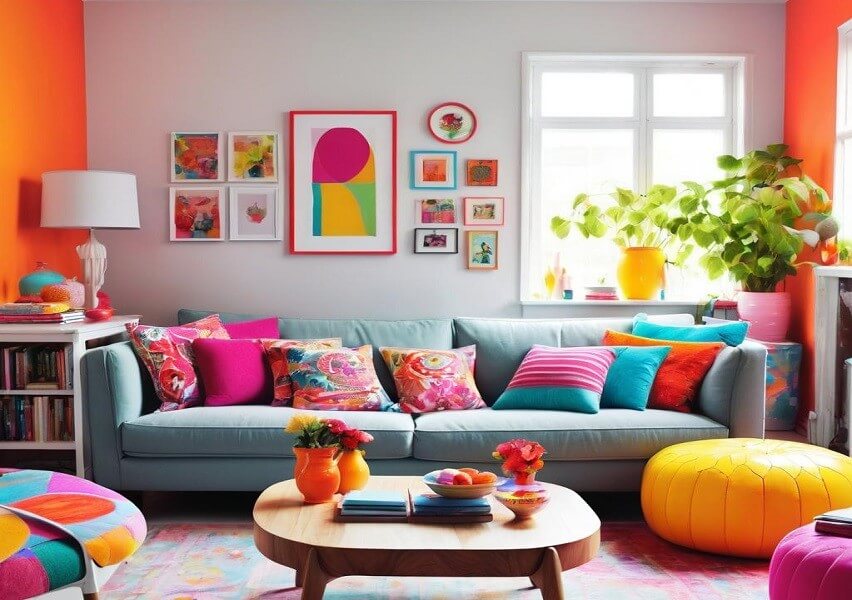
Choosing colours for your home is a critical part of interior design, as colours can significantly affect the ambience, mood, and overall aesthetic of your space. Here are some tips and considerations to help you select the perfect colours:
1. Understand Colour Psychology
- Warm Colours: Red, orange, and yellow can create a cozy, energetic, and inviting atmosphere. These are great for living rooms and kitchens.
- Cool Colours: Blue, green, and purple tend to be calming and relaxing, making them ideal for bedrooms and bathrooms.
- Neutral Colours: Whites, grays, and beiges offer versatility and can serve as a backdrop for bolder colours. They are suitable for any room.
2. Consider the Room's Purpose
- Living Room: Opt for warm, inviting colours like soft yellows or earthy tones to create a welcoming space.
- Bedroom: Choose calming colours such as soft blues, greens, or lavenders to promote relaxation and sleep.
- Kitchen: Use stimulating colours like reds, yellows, or greens, which can enhance appetite and energy.
- Bathroom: Light blues, greens, and neutral tones can create a spa-like, tranquil environment.
3. Lighting Considerations
- Natural Light: Rooms with plenty of natural light can handle darker or more vibrant colours without feeling too oppressive.
- Artificial Light: The type of artificial lighting (warm or cool) can alter how a colour looks. Test paint samples under different lighting conditions to see the true effect.
4. Use the Colour Wheel
- Complementary Colours: Colours opposite each other on the colour wheel (e.g., blue and orange) create a vibrant look.
- Analogous Colours: Colours next to each other on the wheel (e.g., blue, blue-green, and green) offer a more harmonious and soothing effect.
- Monochromatic Scheme: Using different shades and tints of a single colour creates a cohesive and elegant look.
5. Create a Focal Point
- Accent Walls: Painting one wall in a bold colour can draw attention and add interest without overwhelming the room.
- Bold Accents: Use bright colours for furniture, artwork, or accessories to create focal points within a neutral colour scheme.
6. Test Before You Commit
- Paint Samples: Apply paint samples to small areas of the walls and observe them at different times of the day to see how they change with lighting.
- Large Swatches: Consider painting large swatches on the walls or using poster boards to get a better sense of how the colours will look in the room.
7. Harmonize with Existing Elements
- Furniture and Decor: Ensure your colour choices complement existing furniture, flooring, and decorative elements.
- Fixed Elements: Consider the colour of fixed elements like cabinetry, countertops, and tiles when choosing wall colours.
8. Trends vs. Timelessness
- Current Trends: While trendy colours can make a statement, they might go out of style quickly. Use them in easily changeable elements like accessories.
- Timeless Colours: Classic colours such as whites, grays, and soft blues tend to remain stylish over time and are less likely to need frequent updating.
Note: Living rooms can be decorated with colours such as warm brown, soft greens and muted oranges. Whereas the look and feel of the kitchen can be enhanced with bright colours such as red, yellow and oranges.
Conclusion: Colours enhance the look and feel of the home and you can select colours that not only look beautiful but also create the desired mood and function for each room in your home.


